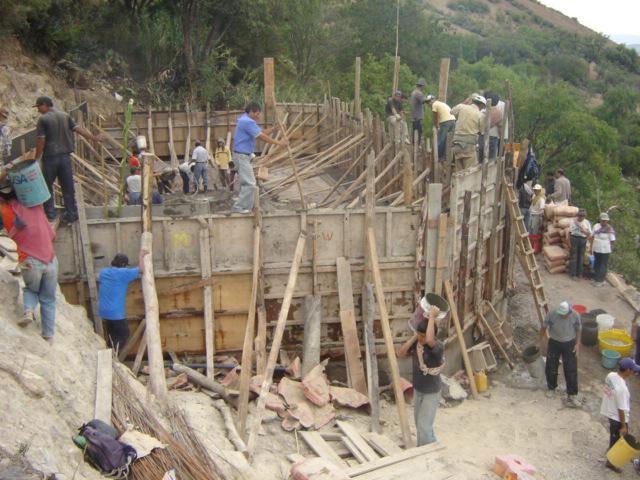
Agriculture is the way of life for many Andean communities, and the mountainous region of Ayacucho is no exception. Farmers there cultivate lands that depend mostly on rainfall for water. Yet in recent years, droughts have been occurring more frequently in the region, creating a demand for irrigation water. Moreover, since the farmers depend on rainfall, this usually limits them to cultivating just one crop each year, making it impossible for farmers to meet local demand for grains and produce.
USAID is helping poor, small farmers in Ayacucho and other Peruvian Andean regions to build irrigation systems, diversify crops, increase access to markets, and strengthen community organizations that represent farmers. The water reservoir under construction in the photo is one example of USAID working closely with beneficiaries in the highlands, as they build and develop their communities. These “nocturnal reservoirs” help make irrigation systems more efficient — by filling up with water at night, when water usage is low, the reservoir has enough water to supplement irrigation systems during peak demand periods. With assistance from USAID, local communities have built reservoirs that store 3,400 meters cubed of irrigation water and 195 kilometers of irrigation canals. In the village of Santa Rosa de Ocana, the nocturnal reservoir has rehabilitated 20 hectares and created an additional 9 hectares of irrigated land, benefiting 350 residents.
As a result of USAID’s projects in the region, farmers have boosted production of crops such as potato, maize, barley, and beans and have even started exporting avocados, chili peppers, snow peas, and onions. Thanks to the reservoirs, 6,845 families in the Ayacucho region are producing crops that are high in demand and improving their quality of life.







Comment
Make a general inquiry or suggest an improvement.